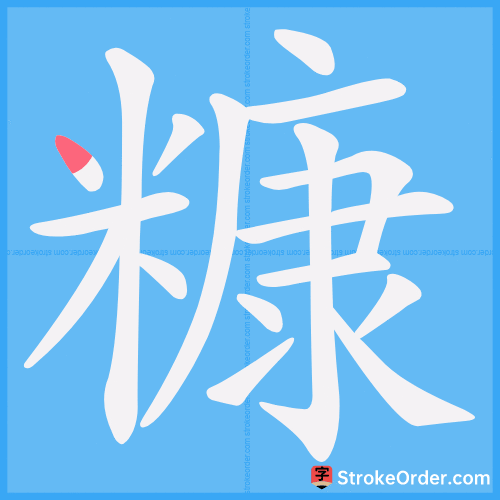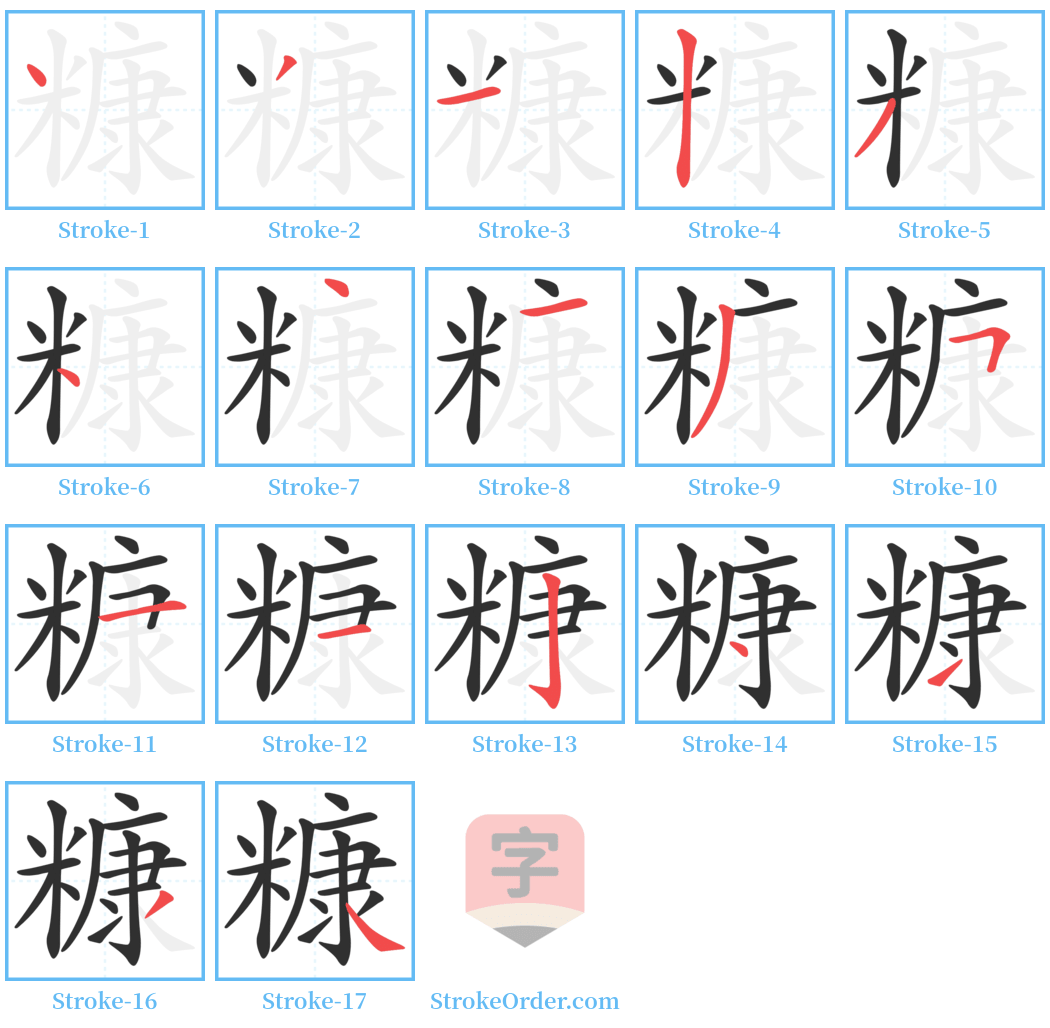糠 Stroke Order
Animated Stroke Order of 糠

Stroke Order Diagrams for 糠

Step-by-Step Handwriting Guide for 糠

Learn to Write Chinese Characters with Video Tutorials
Watch the video of writing the Chinese character "糠", learn the correct stroke order (笔顺) of the character "糠", and master the standard way of writing the character "糠".
Free Printable Handwriting Practice with Stroke Order: 糠
Printable Writing Practice Worksheet of "糠" in Portrait Orientation (Tian Zi Ge)

Printable Writing Practice Worksheet of "糠" in Landscape Orientation (Tian Zi Ge)

Information of 糠
Pinyin
kāng
Radical
米
Strokes
17 strokes
Usage
★★★★★
Definition
husk
糠 (kāng)
1. The shell or husk that falls off the seeds of rice, wheat, millet, etc.
2. The center of a radish or similar vegetable that becomes honeycomb-like due to loss of moisture.
1. The shell or husk that falls off the seeds of rice, wheat, millet, etc.: rice chaff; coarse chaff; husk peel; formaldehyde (an organic compound that is a raw material for making plastics, synthetic fibers, synthetic rubber, medicines, etc.).
2. The center of a radish or similar vegetable that becomes honeycomb-like due to loss of moisture.
糠 (kāng)
1. The skin or shell that comes off the husks of grains like rice and wheat.
2. Chaff; bran; husks of grains.
1. Initially written as “穅” and “康”. The outer shell of grains ([En.] chaff; bran; husks).
【Examples】
- "Neighbor has a chaff trough and wants to steal it." (from Mozi, Gongshu)
- "This is like the relationship between meat and chaff."
- Further examples: coarse grain for half a year's food; chaff residue (coarse particles in chaff, describing rough food); husk rice (broken rice mixed with husk, referring to inferior grain); lamps made from chaff (an old-fashioned lighting tool, burning chaff, used commonly in rural Jilin).
2. The crushed skin layer separated from wheat seeds, rye seeds, or other grains, especially used as livestock feed ([En.] bran).
【Reference】
- "Chaff and rice were originally dependent on each other, now they are separated by tossing." (from Pipa Ji, Zao Kang Zi Yan)
Input Method for 糠
Pinyin
kang1
Wubi
oyvi|oovi
Cangjie
fdile
Zhengma
ufxk
Four Corner
90999
Unicode
U+7ce0